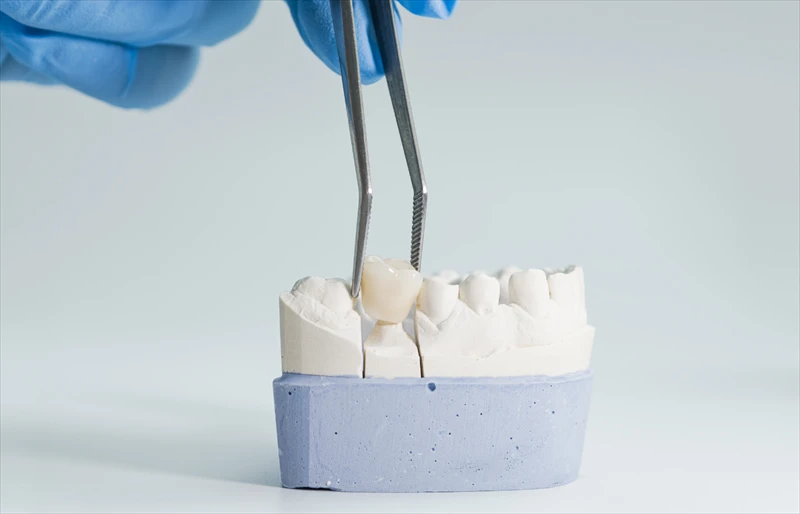Mini Dental Implants vs. Traditional Implants: What’s the Difference?

Understanding the Difference Between Mini Dental Implants and Traditional Implants
Choosing a type of dental implant can be complex, but it can be as simple as selecting different options that both guarantee a healthier and stronger smile. Mini dental implants and traditional implants offer reliable solutions as restorative options for missing teeth, but they differ in procedure, design, longevity, and patient suitability. Understanding the differences helps patients select a treatment that addresses their lifestyle, needs, and long-term goals.
What Are Dental Implants? (A Quick Overview)
Dental implants are artificial tooth roots and are designed to function and look like natural teeth. Typically, an implant consists of a titanium post that fuses with the jawbone, an abutment that connects the post to the crown, and a custom-made crown that restores tooth appearance. Patients often prefer implants over traditional dentures because they are stable, long-lasting, and help maintain the health of the jawbone.
What Are Mini Dental Implants?
Mini dental implants (MDIs) are lighter and less invasive versions of traditional implants. They are preferable in cases where a patient has low jawbone density, Mini Implants are requested, or they are needed to stabilize loose dentures. They are requested a lot in cases where less invasive procedures are needed in comparison to bone and soft tissue cases. They offer a significantly faster recovery interval.
What Are Traditional Dental Implants?
These are larger and the most robust. They boast the greatest long-term durability as they can support a plethora of restorations and even full-arch replacements. Traditional implants come with their own set of risks as they require a healthy bone structure. Bone grafting can sometimes be required and will be needed if a patient has bone loss. The durability and strength of the final implant are exceptional.
Key Differences: Mini Dental Implants vs Traditional Implants
When comparing mini dental implants with traditional implants, you will notice multiple differences, such as the size, structure, the procedure for denture implants, the characteristics of the patients, pricing, and durability. Mini dental implants are one-piece implants, while traditional implants are two-piece and have an abutment placed on top of the implant. This also affects the way the two implants distribute and withstand pressure.
The methods of dental implantation also differ at some level. Mini dental implants are less invasive. There are no significant bone removals and no need for sutures. There are faster recovery times, and most patients appreciate having denture stability on the same day. In comparison, traditional implants need detailed surgical work, which results in longer recovery times, as well as for the osseointegration process.
Suitability for different patients is also an important difference. Mini dental implants are valuable for patients with less bone density, those who have dentures, and for others requiring a lower cost. On the other hand, traditional implants are aimed at people with one tooth, multiple teeth, or the back teeth to be replaced, where considerable bite support is needed.
There are also price differences. Mini implants are more affordable because they are easier to place, require fewer surgical procedures, and usually do not involve grafting. Though traditional implants take more time and require more planning, they are also more valuable because of their durability.
In terms of durability and stability, traditional implants are best. They hold up better to heavy forces, especially in the back of the mouth. Mini implants do last for many years, but are not recommended for high-pressure areas, large restorations, or large pivoting extensions.
Mini implants provide benefits in the form of faster, less painful, and less costly procedures. They are valuable for patients with stabilizing dentures and for patients who are not able to have more extensive procedures. Problems with mini implants include their inability to bear loads on back teeth, decreased longevity in comparison to classic implants, and fewer restorative options available to them.
Traditional Dental Implants: Pros and Cons
Traditional implants are strong and stable, so they are appropriate for any type of tooth replacement. They provide excellent bite and have great long-term success. On the flip side, they are more invasive, may require bone grafting, have a longer healing time, and are more expensive.
Which Implant Is Best For You?
This depends on several factors, which may include jaw bone density, missing tooth location, budget, oral health history, and goals. At Rochester Hills Dentist, we utilize modern imaging for each patient and provide them with a detailed evaluation to identify the safest and most effective implant for each patient.
FAQ: Mini Dental Implants vs. Traditional Implants
1. Are mini dental implants as strong as traditional implants?
Mini implants are strong but not as strong as full-size implants. Traditional implants do provide strong support for heavy chewing.
2. Do mini implants involve less discomfort?
Yes, the procedure is less invasive, so healing is more comfortable and quicker.
3. Can mini implants be used to replace molars?
Typically, they are not recommended for molars because molars also require greater biting strength.
4. How long do dental implants last?
Traditional implants can last more than twenty years and even a lifetime. Mini implants last generally for 10-15 years, but also depend on location, care, and bite pressure as well.
5. Are implants safe for seniors?
Yes, mini and traditional implants are also used for seniors to restore function, comfort, and confidence.






